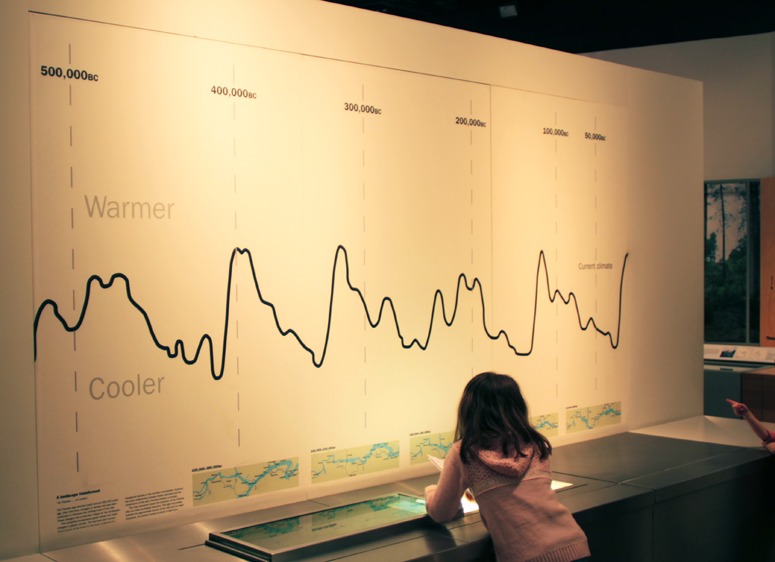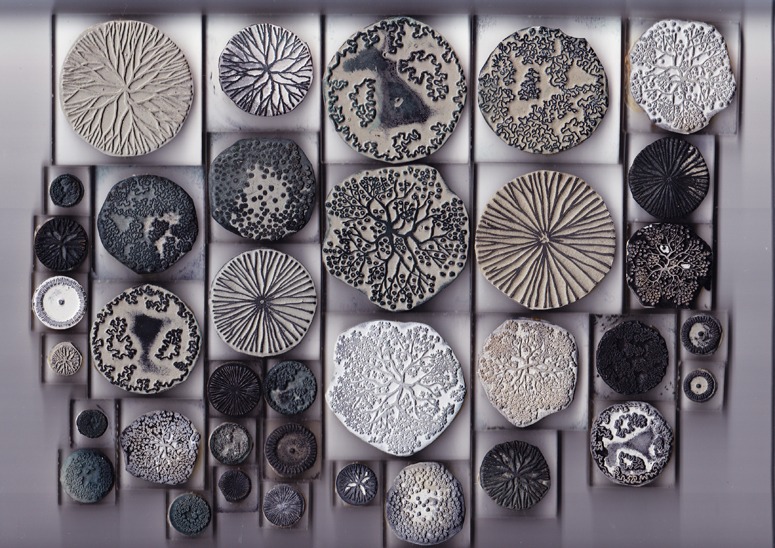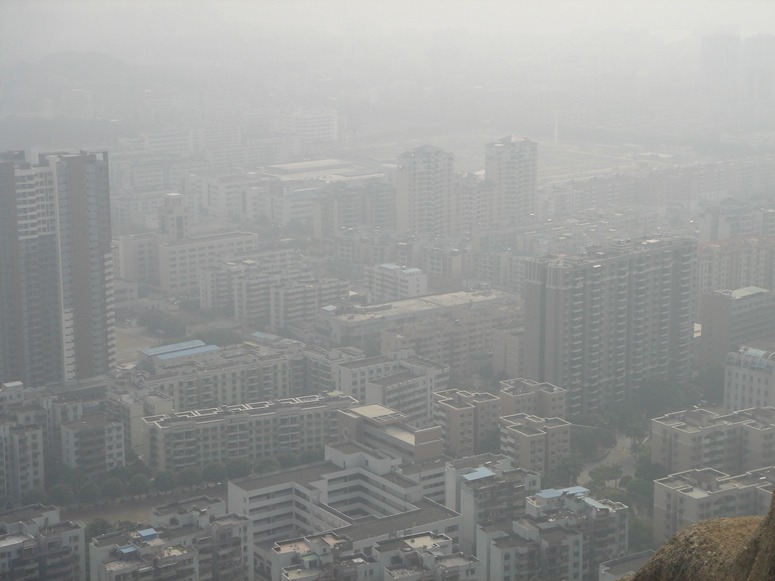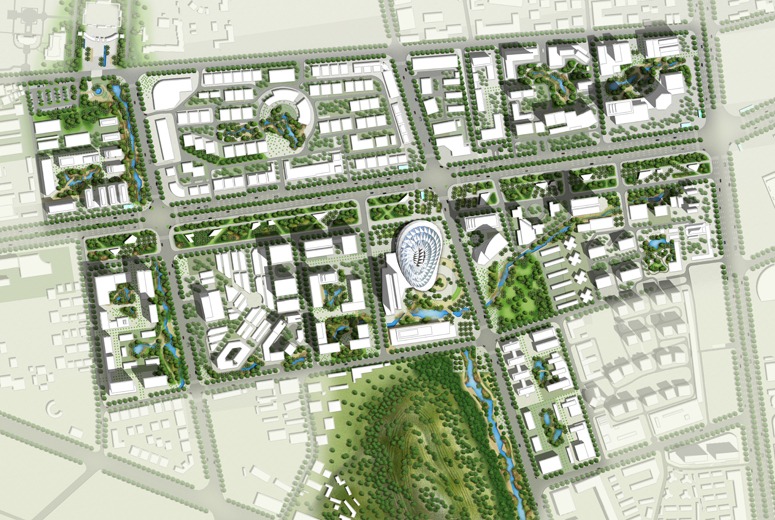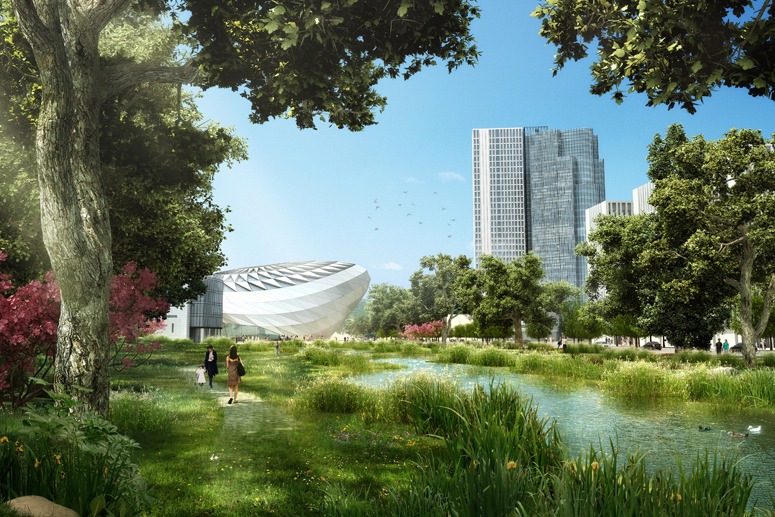The above chart, from the Museum of London, shows the pattern of climate change in the past 500,000 years. It does not have a vertical scale but I think mean temperatures were about ten degrees centigrade cooler at the Last Glacial Maximum (the last dip before the 50,000 years of global warming before the present). I am not a chart expert or a climate change expert but, to me, it looks as though a period of global cooling should be expected, whatever the consequences of man-made (anthropogenic) climate change.
Monthly Archives: February 2012
Lord Foster Airport Thames Hub Isle of Grain – landscape implications

George Orwell called it Airstrip One. It was in what “had been called England or Britain”. This was the homeland of Winston Smith, in his novel 1984. Not to be outdone, Lord Foster has set about designing Airstrip One, with help from Halcrows, as engineers, and Volterra, as economic consultants. Their report makes some good points: IF air traffic is to continue growing THEN London will need a new airport and IF London is to have a new airport THEN the Thames Estuary is the best location. Furthermore, one could hardly do better than Lord Foster as the designer. But he should have worked with a good landscape architect and I would recommend James Corner for the job. His firm’s name is ‘Field Operations’ and this is what the airport needs. The Foster design looks like an aircraft carrier moored in the Estuary. It will face the bitterest opposition from the people of Kent. The would-be developers would have a better chance with Boris Johnson’s Island Airport location. Could anything be done to improve the landscape acceptability of the Isle of Grain site? One thing is for sure: they could have done a very much better job with the water margin. It should be beautiful and ecological – providing a very special habitat for birds which do not have the habit of bringing down aircraft. Norman Foster has worked with some good landscape architects in his time but in essence he is an object-oriented designer, not a space-oriented designer. On this occasion, I think he has spent a lot of money and diminished the chances of an airport being built in the Thames Estuary. The protestors may come to think him for this and I remind him of the old proverb:
For want of a nail the shoe was lost.
For want of a shoe the horse was lost.
For want of a horse the rider was lost.
For want of a rider the message was lost.
For want of a message the battle was lost.
For want of a battle the kingdom was lost.
And all for the want of a horseshoe nail.
Bosco Verticale – vertical forest garden balconies in Milan
But will it work? I do not anticipate a horticultural problem with growing the trees. But will the residents want them? I am sceptical. A planted balcony with shrubs, flowers and living space is a delight. But there is a long history of residents not wanting large trees too near the windows of their houses. Trees keep out the sun and block views. The trees on top of the building should be a great success – providing the structural, horticultural and stability issues have been properly addressed.
Landscape architecture tree stamps
On my first day in a landscape architecture office the kind lady at the drawing board behind mine asked ‘What have you done before?’. I told her, modestly, ‘degrees in philosophy and landscape architecture’. ‘Ah’, she said, wisely and with a soft Scots accent,’an apprenticeship in the post office would more use – the main thing we do here is tree stamping’. So, in memory of that happy day, I give you a scan of a very high-class set of tree stamps, which belonged to my former colleague Michael Lancaster. A very good designer and draughtsman, I can’t think what he used them for. The largest stamps were unused until I had a go with them recently. Just think how much use they could be for retrospective planning in Chinese cities!
Retrospective Planning
Extremely rapid development is not generally compatible with far-sighted urban planning, but it does offer surprising advantages when it comes to retro-planning. The city of Zhuhai was one of China’s first Special Economic Zones, called into being by Deng Xiao Ping in the 1980’s. These were areas strategically chosen for accelerated development, Zhuhai because of its proximity to the economic hothouses of Hong Kong and Macau.
The result of these economically wildly successful areas has been an enormous urban mass, devoid of nodes, points of focus and green networks. There are now moves afoot to address these deficiencies by revisiting those areas of light industry, warehousing and mass housing that, instead of being outside of the city centre where they would normally and sensibly be sited, now find themselves disfunctionally marooned in the inner city, which has simply grown around them. A combination of selective demolition, change of function and new construction can create not only the missing urban nodes, but also public parks and the beginnings of green networks. Thus can the seeds of a Chinese urban planning renaissance be sown in the context of the economic renaissance that is required to finance these changes to the urban fabric.
The images show the Gongbei District of Zhuhai, how it looks now and how it might look within the next 10 to 20 years.

